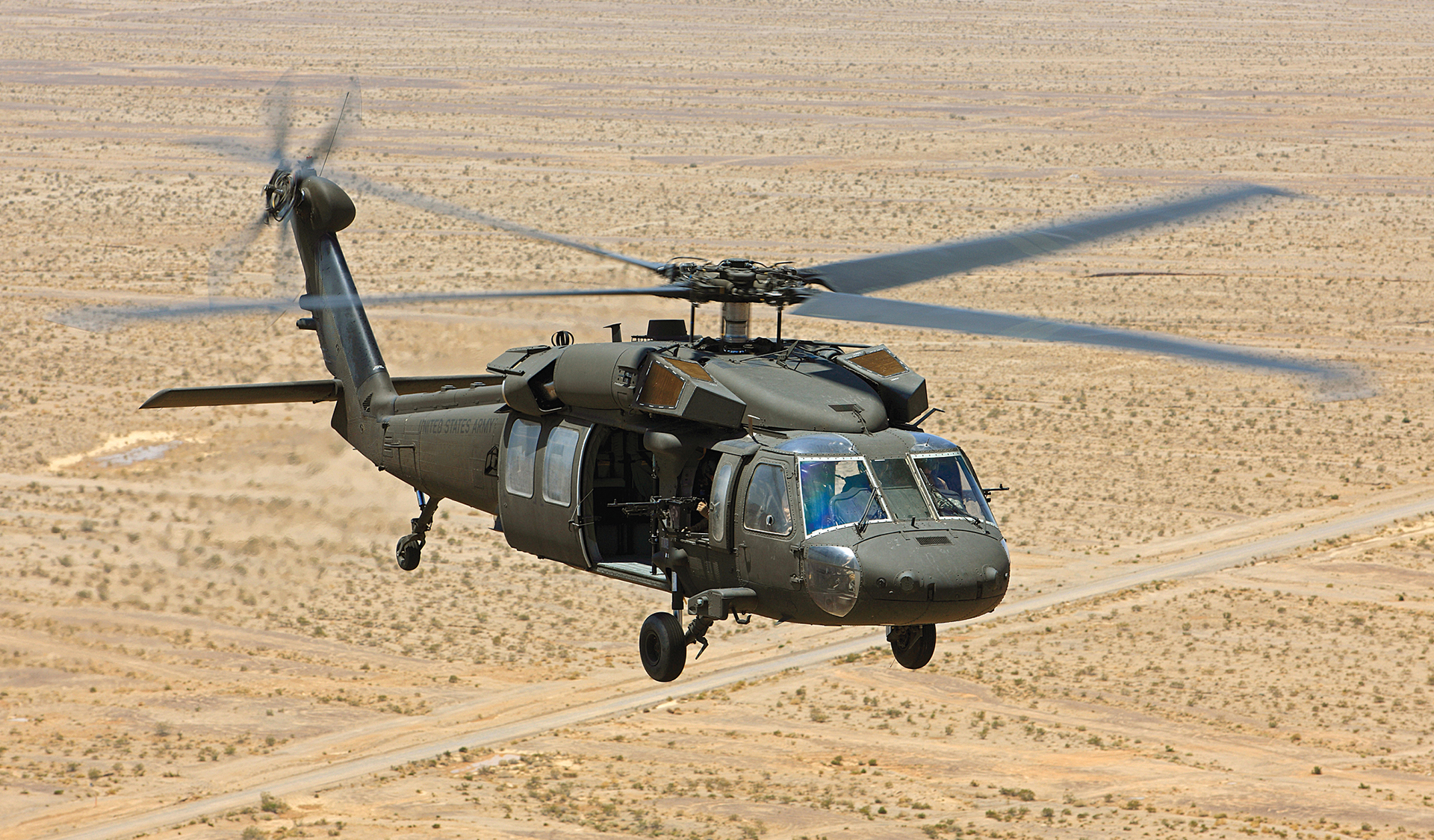Comprehending the Mechanics and Engineering Behind Uh 60 Helicopters
The UH-60 helicopter, generally known as the Black Hawk, stands as a peak of modern rotorcraft innovation, embodying a mix of durable engineering and intricate mechanics. As we peel off back the layers of the UH-60's style, a globe of detailed systems and careful engineering comes to light.
History of UH-60 Helicopters
The history of UH-60 helicopters traces back to the late 1970s when the USA Military sought a advanced and flexible utility helicopter to change its aging fleet. In action to this need, the Sikorsky Airplane Company established the UH-60 Black Hawk helicopter. Introduced in 1979, the UH-60 quickly ended up being a staple in army operations because of its outstanding capabilities.
The UH-60 was created to master a variety of objectives, including troop transport, clinical emptying, digital war, and special procedures. Its capability to adapt to different functions made it a useful asset to the united state Army and other army pressures around the globe
Over the years, the UH-60 system has actually undergone several upgrades and variants to improve its efficiency and keep speed with developing objective requirements. These helicopters have seen comprehensive solution in conflicts such as the Gulf Battle, Afghanistan, and Iraq, showcasing their reliability and versatility in varied functional settings. The UH-60's rich background is a testament to its enduring tradition as a leading energy helicopter.

Engine and Power Systems
Making use of innovative propulsion technology, UH-60 helicopters are furnished with innovative engine and power systems to ensure ideal efficiency and dependability in a variety of operational situations. The UH-60, frequently referred to as the Black Hawk, is powered by two General Electric T700-GE-701D engines, each capable of delivering up to 1,940 shaft horse power. These turboshaft engines give the required drive for the helicopter to execute its missions successfully, consisting of army transportation, clinical emptying, and battle assistance.

Blades System and Aerodynamics
How do the rotor system and the rules of aerodynamics of UH-60 helicopters add to their operational performance and flight abilities? The blades system of the UH-60 helicopter plays an important role in providing lift and propulsion. The UH-60 includes a four-bladed, completely articulated blades system that allows for high ability to move and security during trip. This design makes it possible for the helicopter to do a large variety of goals, from transport and medical discharge to battle procedures.
Aerodynamics additionally play an essential role in the performance of UH-60 helicopters. The streamlined body and rotor blade layout reduce drag, allowing the helicopter to attain higher rates and far better gas effectiveness. The wind resistant design of the UH-60 additionally contributes to its ability to operate in varied ecological conditions, consisting of hot temperatures and high altitudes.
Avionics and Flight Control Systems

In its detailed control with the rotor system and aerodynamics of UH-60 helicopters, the avionics and flight control systems create a critical network of innovations forming the aircraft's operational capabilities. In the UH-60, these systems include electronic display screens, communication radios, General practitioner navigating, weather radar, and auto-pilot systems.
The trip control systems of the UH-60 are in charge of equating the pilot's inputs right into the proper adjustments to the rotor system, guaranteeing stable trip and maneuverability. These systems are composed of hydraulic actuators, servos, and computer systems that interact to control the tail and primary rotors, along with other trip control surface areas. By exactly taking care of the helicopter's trip dynamics, these systems allow pilots to do a wide variety of objectives, from transportation and search-and-rescue to combat operations, with precision and confidence.
Function and Applications in Aviation
Avionics systems in UH-60 helicopters include a variety of electronic systems great site that help in navigation, webpage interaction, surveillance, and controlling numerous aircraft functions. These systems consist of electronic display screens, autopilot systems, communication radios, GPS navigating tools, and climate radar. Additionally, these systems include safety functions such as autopilot modes, surface recognition cautioning systems, and security augmentation systems to improve the total safety and operational capacities of the UH-60 helicopters in numerous objectives, including army transportation, clinical evacuation, search and rescue, and airborne firefighting.
Verdict
In final thought, the UH-60 helicopter is a flexible aircraft with a rich background and progressed design. Its engine and power systems, rotor system, aerodynamics, avionics, and trip control systems all work with each other to make it a reputable and efficient machine. The UH-60's role and applications in aeronautics are large, varying from armed forces operations to look and rescue missions. Its continued advancement and usage show its value in the area of aeronautics (uh 60).
In its elaborate sychronisation with the blades system and aerodynamics of UH-60 helicopters, the avionics and flight control systems develop a crucial network of modern technologies forming the aircraft's functional capabilities.The flight control systems of the UH-60 are responsible for translating the pilot's inputs right into the ideal modifications to the blades system, making sure steady trip and ability to move. Avionics systems in UH-60 helicopters incorporate a range of electronic systems that help in navigating, interaction, surveillance, and managing various airplane functions. Furthermore, these systems integrate safety functions such as autopilot modes, terrain understanding cautioning systems, and stability augmentation browse around here systems to boost the overall safety and operational abilities of the UH-60 helicopters in numerous objectives, including army transport, clinical evacuation, search and rescue, and airborne firefighting.
Its engine and power systems, rotor system, aerodynamics, avionics, and trip control systems all function with each other to make it a effective and reliable machine.